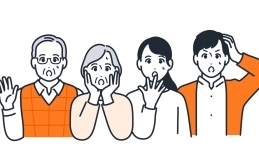“Taking time to reflect opens the door to conscious awareness, which brings with it the possibility of change.”
― Daniel J. Siegel
As my daughter gets older, I find that the tasks and demands of parenting change in many different ways. From keeping her alive by meeting her basic needs, to chasing her around so she doesn’t hurt or kill herself, always on my toes. Later, just trying to make sure she grows up to be a functioning adult. For the most part, my daughter no longer needs constant supervision; but lately, I find myself trying to strike a balance between the loving, caring mom and the no-nonsense disciplinarian. On some occasions, my sweet little angel tests my patience and becomes anything but sweet. When this first started happening, I’d find myself frozen whenever she misbehaved, unsure how to respond. But eventually, I started doing what I do best whenever I’m perplexed: educate myself.
I picked up a book that has not only affirmed some of my own ideas, but also taught me some new ways to parent. It’s the New York Times bestseller, No Drama Discipline, by Daniel J. Siegel and Tina Payne Bryson. After reading this book, I found that I didn’t have to be a loving and caring mom one minute and a prison guard the next. I found out that you can connect and be loving to your child, even when trying to set boundaries and limits. Since I know not all of us have time to read entire books on parenting, no matter how useful the information might be, I decided to share with you some of the most important aspects of this book—the ones that help me be a better parent.
You Can’t Discipline A Kid Without a Consistent Definition of Discipline
Discipline has to be proactive, not reactive. Most of us discipline on autopilot, reacting with anger in the moment. But discipline isn’t useful if it’s simply a reaction to misbehavior; it needs to come from predetermined principles and a set strategy. In No Drama Parenting, Siegel and Payne Bryson argue persistently against spanking or yelling. When we, as parents, react with anger, we sacrifice the long-term goal of raising a good human for the most short-term goal possible: immediately stopping the behavior by any means necessary. We’re better served by knowing how we want to respond to misbehavior before it happens. Know why you want to respond the way you do, so you can be prepared to give that response when the moment comes.
H.A.L.T.
One of the book’s two key acronyms, H.A.L.T., stands for Hungry, Angry, Lonely, and Tired—the emotions most likely driving the tantrums you’re trying to put a stop to. When my daughter gets overtired, she becomes a hot mess; she’s ultimately inconsolable. I’d rather her not get to that deeply emotional place, so I’ve started looking for the four H.A.L.T. emotions, which tend to manifest themselves subtly before building up to ear-piercing tantrums. If you can identify the signs early, you have a chance of dealing with the issue before the devil comes out and toys get broken.
Using principles of connection can be pretty useful in the moments right before all hell breaks loose. This means communicating comfort; validating (and then validating some more); talking less and listening more; reflecting back what you’ve heard. The first and third principles are straightforward. The second one means you don’t minimize or deny whatever it is that’s causing your kid to act like a crazy person. The fourth one means verbally acknowledging the things you’re validating. “I understand that you’re angry because I wasn’t paying attention to you.”
Another interesting concept is the upstairs versus downstairs brain. Reacting to misbehaviors with immediate consequences and this-then-that sequences over-simplifies things. According to Siegel and Payne Bryson, this engages the kid’s instinctive downstairs brain; alternatively, you can respond by asking questions that engage the rational upstairs brain. Their metaphor reduces the most complex part of your kid’s anatomy to a dollhouse. They advocate for making conversations, not consequences. Instead of immediately reacting to misbehavior—by smacking your kid, for example—start a conversation—”Tell me what happened. How do you think you should have reacted?
The Act of Disciplining Should Be Consistent
Why? What? How? — Skip reactive consequences like time-outs or punishments and instead use those situations as opportunities to engage your child with leading questions that get them to think about what’s going on. Ask your child why they acted the way they did; ask yourself what lessons you want to pull from the moment and how best to teach them. For example, if your 4-year-old is hitting you while you’re talking to your wife or making dinner, ask yourself: Why is your kid hitting you? Because they want attention. What do you want them to learn? That there are better ways to get attention than hitting. How should you teach this? Have your kid practice saying, “Excuse me,” and respond attentively every time.
Before you punish, connect — After your kid misbehaves, they’re in a vulnerable emotional state that could include panic, insecurity, shame, and anger. It’s important that they feel this in the moment, in order to change from reactivity to receptivity. Immediately following an incident of misbehavior, make physical contact with your child. Rather than standing over them and waving a finger, kneel down to their level, and hold their shoulders or rub their back. Physical reassurance disarms children; they can’t learn if they’re flinching.
Spare the rod and … just spare the rod — Spanking is simply a more extreme version of a time-out-style reaction to misbehavior. There’s no scientific evidence that it does anything beyond stopping a single incident of bad behavior, that single time only.
H.A.L.T. fail — H.A.L.T. is a nice sentiment, but sometimes warning signs aren’t too visible before the meltdown happens. Tantrums are incorrectly defined by many parents as a plea for attention. They are more correctly understood as the child’s brain being overwhelmed by stress hormones. In other words, tantrums aren’t a plea for attention so much as a plea for help. Don’t command and demand from your child; that’s only going to stir up drama and fall on deaf ears. Instead, empathize with your child and establish physical contact. Then, ask a question—for example, “Do you see anyone else screaming at the top of their lungs or kicking? Why do you think that is?”
Turn down the “shark music” — “Shark music” is what the authors call the “here we go again” baggage parents bring to situations, when they convince themselves that their kid is about to misbehave. It’s a reflexive focus on the bigger picture as opposed to the current situation. Recognize that not all parenting experiences apply in all situations. Make decisions based on what your kid needs in that moment, and not on assumptions based on what happened last time. Also, stop thinking of your kid as a spoiled, manipulative monster who misbehaves on purpose.
R.E.D.I.R.E.C.T. — This is the book’s acronym to end all acronyms. It contains the authors’ overall strategy in 8 simple concepts: reduce words; embrace emotions; describe, don’t preach, involve your child in the discipline; reframe no into a conditional yes; emphasize the positive; creatively approach the situation; teach “mindsight tools.” While most of that is pretty self-explanatory, “mindsight tools” are specific to Siegel’s ideas about how people develop insight about themselves and empathy for others. When it comes to kids, mindsight is all about helping them understand that they aren’t victims of external forces but rather active players in their own situations. If every adult complaining about work/the government/society/etc. would practice this technique, the whole world would be a much less tantrum-filled place.
All kids are different, of course, and there’s no one size fits all strategy for parenting; but this book offers tips that most parents can utilize. It’s important to note that this way of parenting takes patience and time, and the results probably won’t be immediate. But in the long-term, it will pay off by helping you foster a deeper connection with your child or children as they grow, showing them how to self-regulate by looking within and making better decisions for themselves. As a parent, what can be better than that?
Did you enjoy reading this article?
Once a week I send out a newsletter with new articles and unique content for readers. It is my way of staying in touch with you and giving you free advice based on some important topics.
Click here to sign up for my newsletter.
Do you know someone that has a tough time saying no? Steer them to my latest book, “When It’s Never About You: The People-Pleaser’s Guide to Reclaiming Your Health, Happiness and Personal Freedom.” It is available to order here!
Talk soon,
Dr. Ilene





